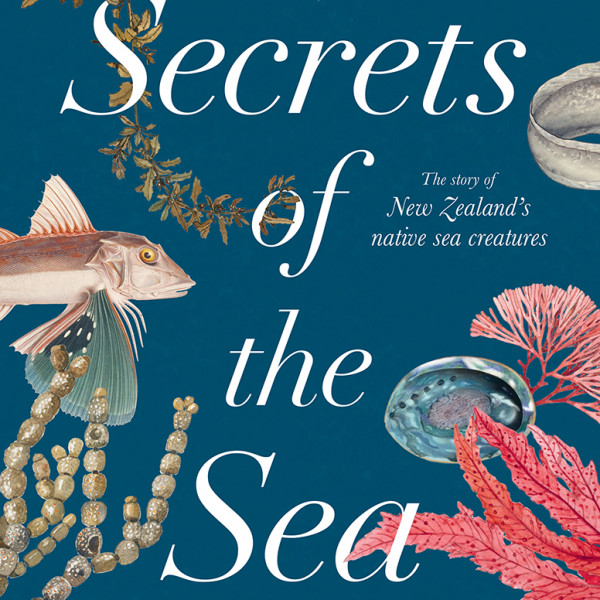
Here’s a fish – this is what it looks like, this is what it eats, and this is who eats it. That’s how I thought Secrets of the Sea would go. Surprisingly I found something much more interesting: an almost mini encyclopaedia of the wondrous creatures of the sea, intricately entwined with the history of Aotearoa.
Author Robert Vennell unravels the hidden lives of a vast array of creatures that lie beneath our magnificent waters, from the depths of the ocean to our rivers and sandy shores, giving insight into their biology, etymology, unique characteristics, and cultural significance and importance to Māori. Steeped in history and tradition, Secrets of the Sea is a standout. It’s an evolutionary tale that speaks to the way these unique creatures have had a profound impact on our lives on land despite being largely hidden and sometimes forgotten.
Vennell’s fascinating glimpse into the history of the butterfish reveals they were often linked with nocturnal mischief, just as the whakataukī reads: Ka pō, ka pō, ka kai te rarī (When it is night, the butterfish feed). For Māori, there was a feeling that butterfish or rarī were troublemakers.
Eels or tuna on the other hand were considered by Māori to be one of the single most important food sources found in Aotearoa. On a recent camping trip, I found myself helping to navigate the feeding of eels. Swarming around all slippery, thick and serpent-like, the eels (what variety of, I do not know) took stock of the food, snaking around each other en masse. I was surprised to read that New Zealand longfin eels can grow to be the largest in the world, weighing more than a small child, and can live up to 100 years, effectively giving the humble turtle a run for its money in the longevity stakes.
Gorgeously illustrated, and with stunning photography, Secrets of the Sea is a resplendent unravelling of the mysteries surrounding some of the incredible inhabitants of Aotearoa waters.












